Cannondale launched the fourth-generation SuperSix Evo with the exclusive and expensive Lab71 and Hi-Mod models. Those, however, start at £8,250 for the Ultegra-Di2 equipped Hi-Mod 2.
Thankfully, it has now brought the latest SuperSix Evo platform down to a more affordable level.
Here, the frameset is paired with a sharp build, and although it could bear an upgrade or two, you’re left with the budget to achieve this, and then some. It could well be enough bike for anyone.
Cannondale SuperSix Evo 3 frame details
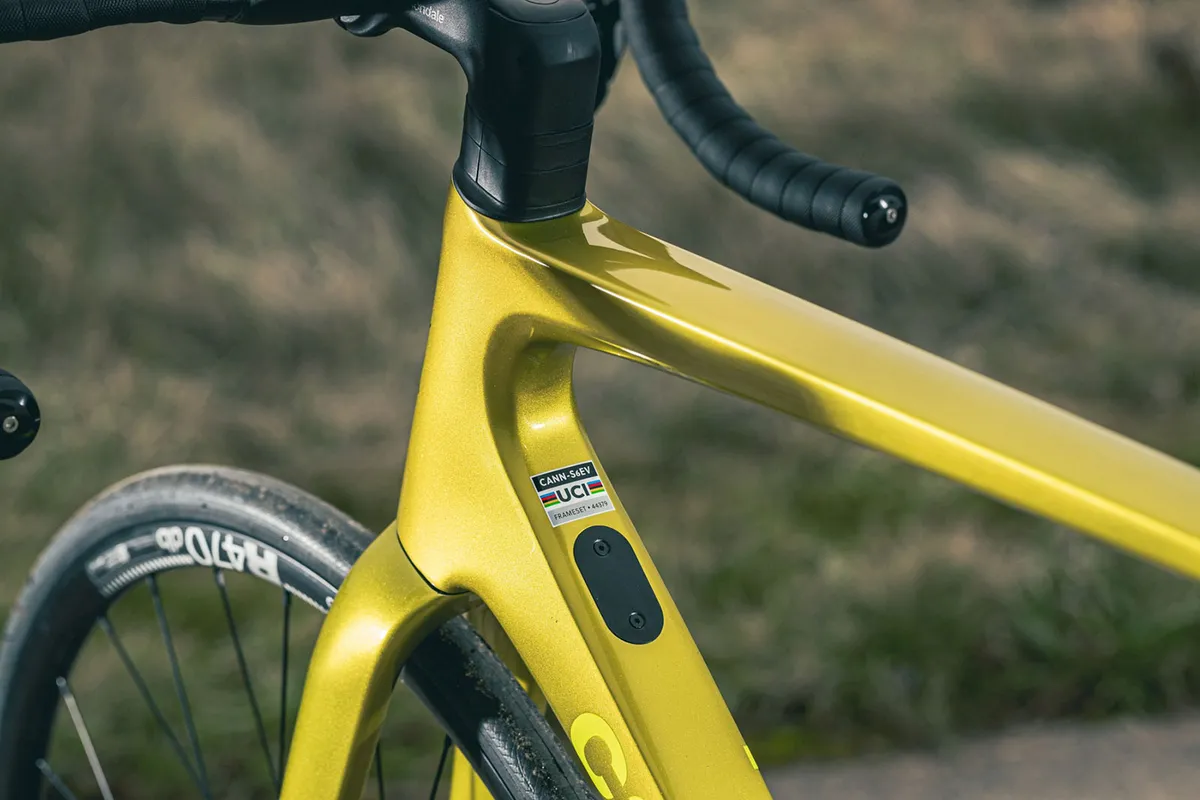
While the Hi-Mod has an astonishingly light 770g frame (claimed, fully painted and with hardware fitted in a size 56cm), this ‘standard’ bike isn’t very far behind at 930g.
Essentially, this version uses a more economical choice of carbon in its construction, but is otherwise identical.
That means all the clever details are present, including the Delta fork steerer and head tube design.
This new triangular-shaped steerer is said to enable Cannondale to reduce the head tube size, while still providing for fully integrated cable routing.
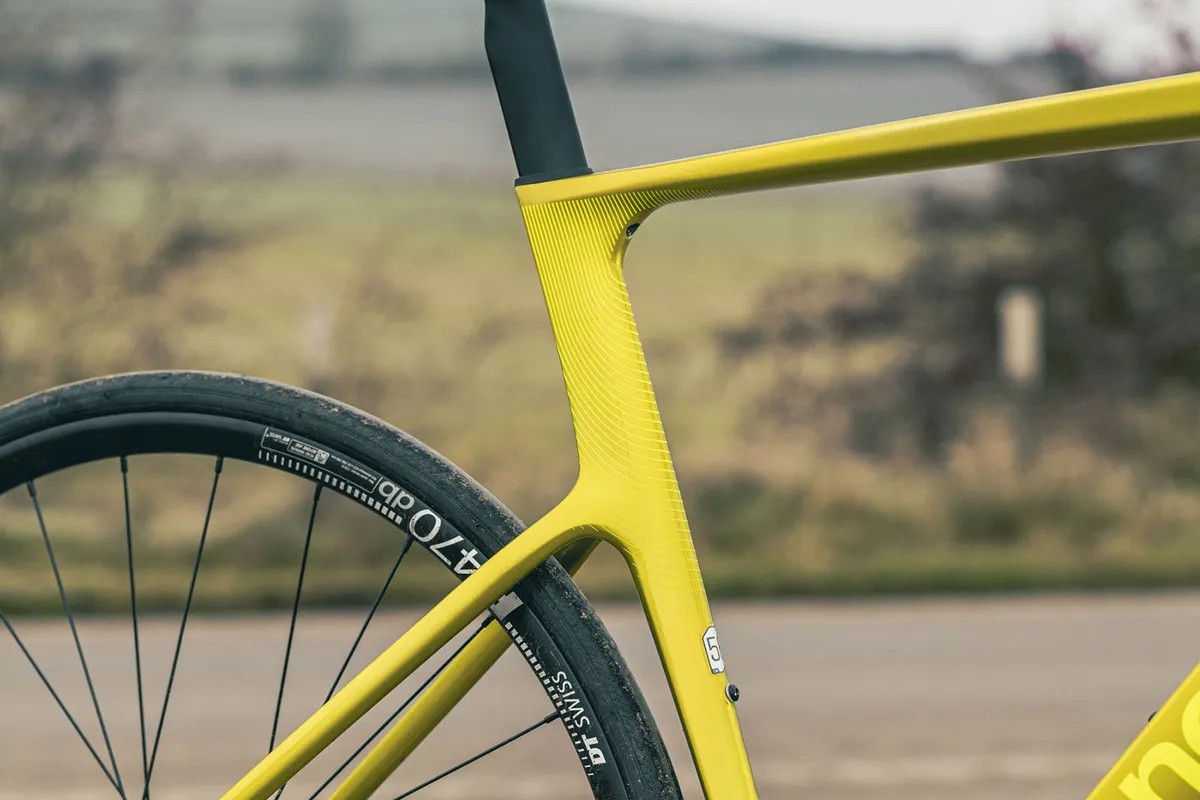
The new design also eliminates the need for the steering stops found on the older model, using a 1-1/8 – 1-1/2in headset. Effectively, this eliminates any concerns around the use of proprietary parts.
Cannondale has also switched to a BSA threaded bottom bracket, moving away from its own press-fit BB30 design.
The back end of the bike brings lots more aerodynamics, with the new aero seatpost striking at 15mm wide.
The seat tube follows the same thin bladed shape, which means a Di2 battery (usually found hidden in the seat tube) won’t fit. It’s been moved into a port in the down tube.
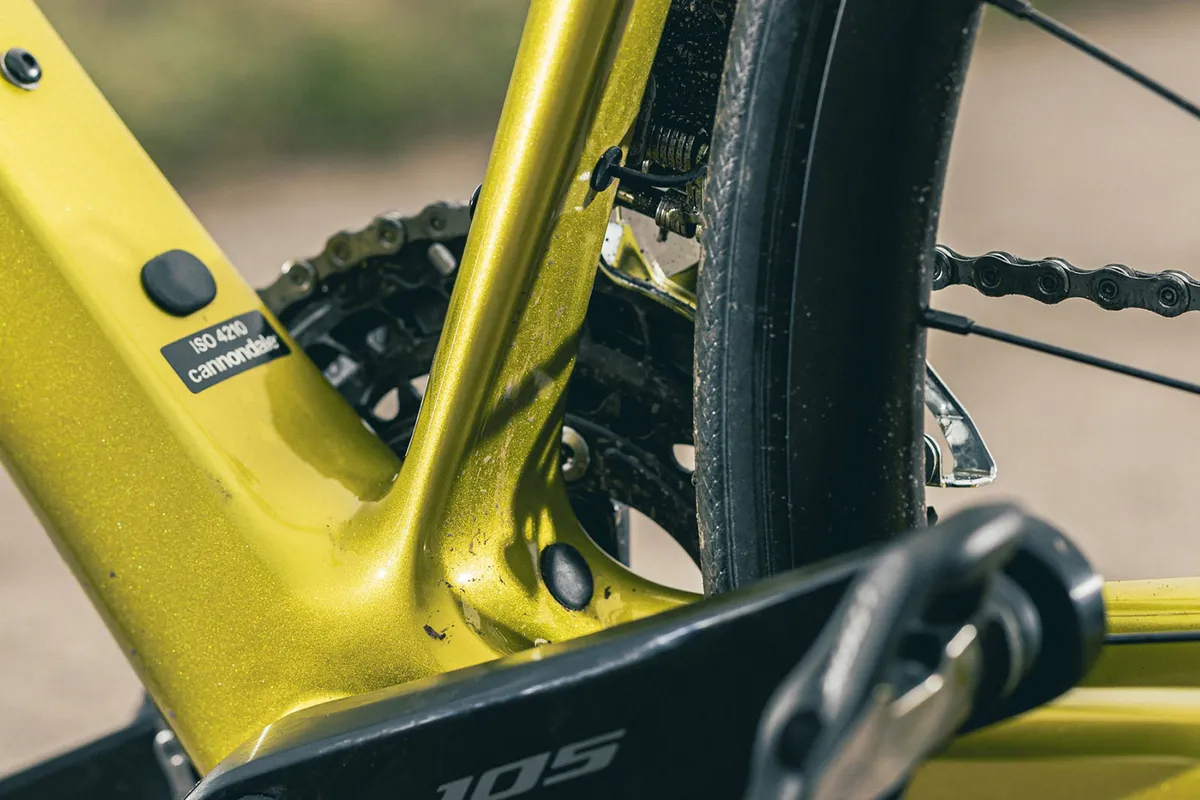
Cannondale claims this was the biggest single gain in aerodynamics over the previous bike, claiming at launch a 12-watt saving at 45kph compared to the Trek Emonda SLR, and four watts over the Specialized Tarmac SL7.
Cannondale has also moved away from the Speed Release axles, whereby the thru-axle threaded into a standard dropout, but at the handle end the dropout was open-bottomed to enable the wheel to be removed with the axle in place.
The new dropouts use the lightweight Syntace standard, which Cannondale says has helped drop weight from the bike overall and allowed for a clean-looking hidden dropout on the fork.
Cannondale SuperSix Evo 3 geometry
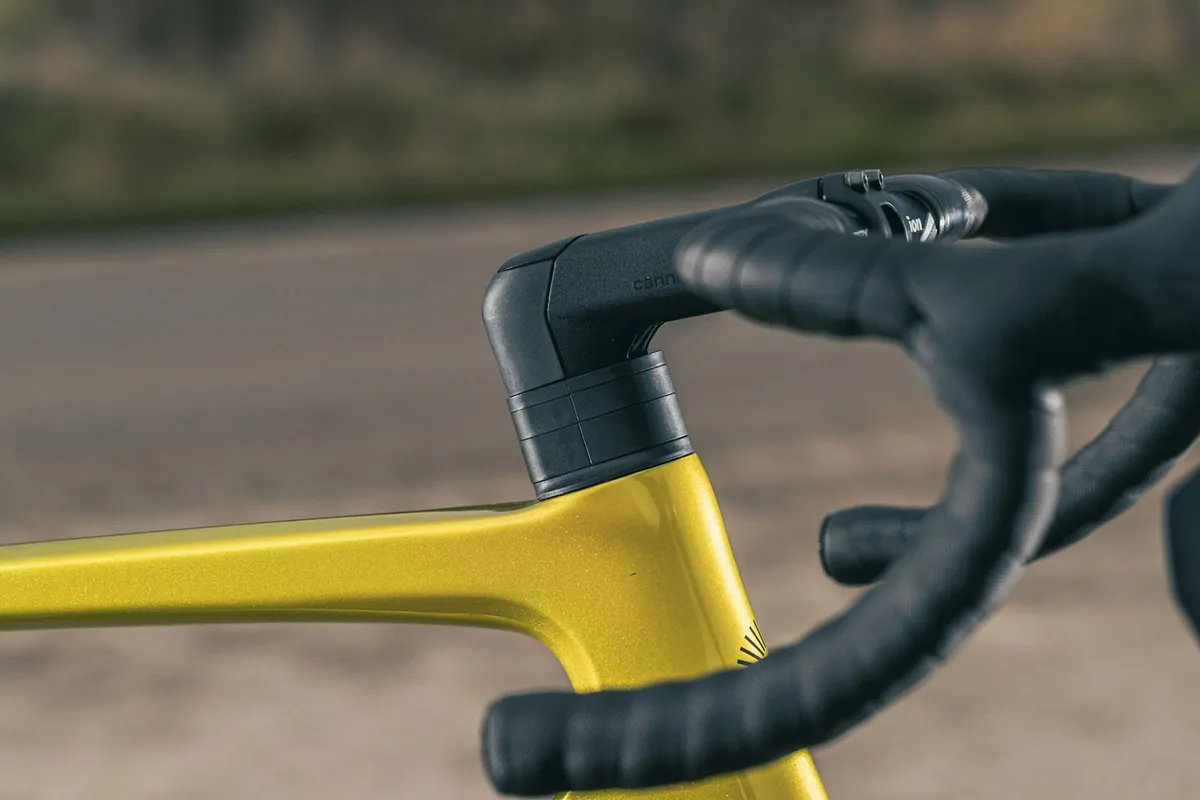
The geometry of the Evo is a case of ‘if it ain’t broke, don’t fix it’.
It’s basically the same as that of its recent predecessors and has won plaudits for its handling ever since.
The important numbers remain largely unchanged, with only small increases dotted around to accommodate the growth in tyre clearance (up from 30mm to 34mm).
Larger riders have less sizing choice with the removal of the 60cm and 62cm bikes from the range, replaced by a single 61cm model.
An almost parallel 73-degree head angle and 72.9-degree seat angle are seen on my 56cm test bike, with a fast-handling 58mm trail on the fork.
The 994mm wheelbase is compact, adding to the race bike appeal.
| | 44 | 48 | 51 | 54 | 56 | 58 | 61 |
|---|---|---|---|---|---|---|---|
| Seat tube angle (degrees) | 74.3 | 74.3 | 74.3 | 73.7 | 73.7 | 72.9 | 72.3 |
| Head tube angle (degrees) | 70.9 | 71.2 | 71.2 | 71.2 | 73 | 73 | 73 |
| Chainstay (mm) | 410 | 410 | 410 | 410 | 410 | 410 | 410 |
| Seat tube (mm) | 400 | 438 | 477 | 515 | 534 | 567 | 600 |
| Top tube horizontal (mm) | 512 | 520 | 528 | 546 | 562 | 578 | 603 |
| Head tube (mm) | 100 | 114 | 130 | 154 | 165 | 188 | 220 |
| Fork offset (mm) | 55 | 55 | 55 | 55 | 45 | 45 | 45 |
| Trail (mm) | 60 | 58 | 58 | 58 | 58 | 58 | 58 |
| Bottom bracket drop (mm) | 74 | 74 | 74 | 72 | 72 | 69 | 69 |
| Bottom bracket height (mm) | 268 | 268 | 268 | 271 | 271 | 273 | 273 |
| Wheelbase (mm) | 981 | 987 | 996 | 1010 | 994 | 1007 | 1024 |
| Standover (mm) | 698 | 727 | 756 | 788 | 807 | 836 | 866 |
| Stack (mm) | 505 | 520 | 535 | 555 | 575 | 595 | 625 |
| Reach (mm) | 370 | 374 | 378 | 384 | 389 | 395 | 403 |
Cannondale SuperSix Evo 3 build
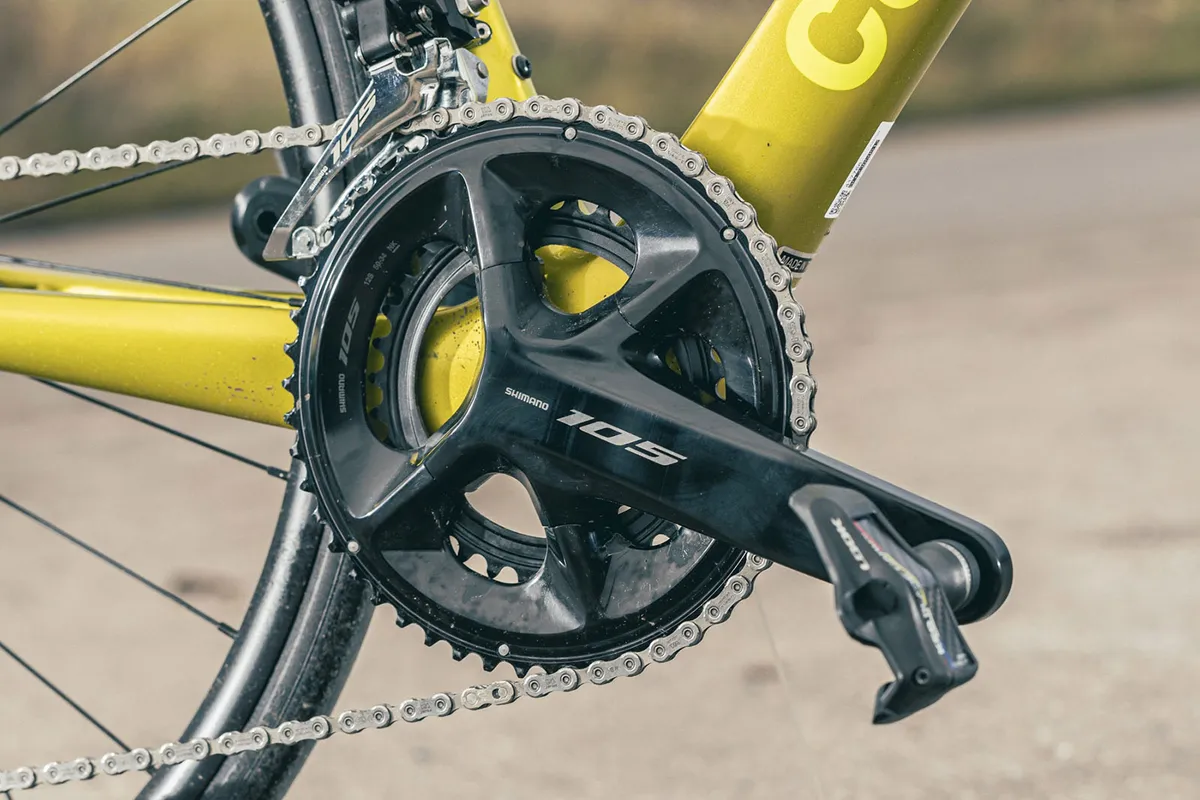
At the heart of the SuperSix Evo 3 build is Shimano’s most affordable version of its Di2 electronic drivetrains – 105 Di2 R7100.
105 Di2 may be Shimano’s entry into motorised shifting, but it’s still very much a premium road bike groupset.
The shifting is swift, accurate and reliable, and the brakes are packed with power and feel.
The gear range is ample, with a 50/34-tooth crankset and an 11-34t cassette.
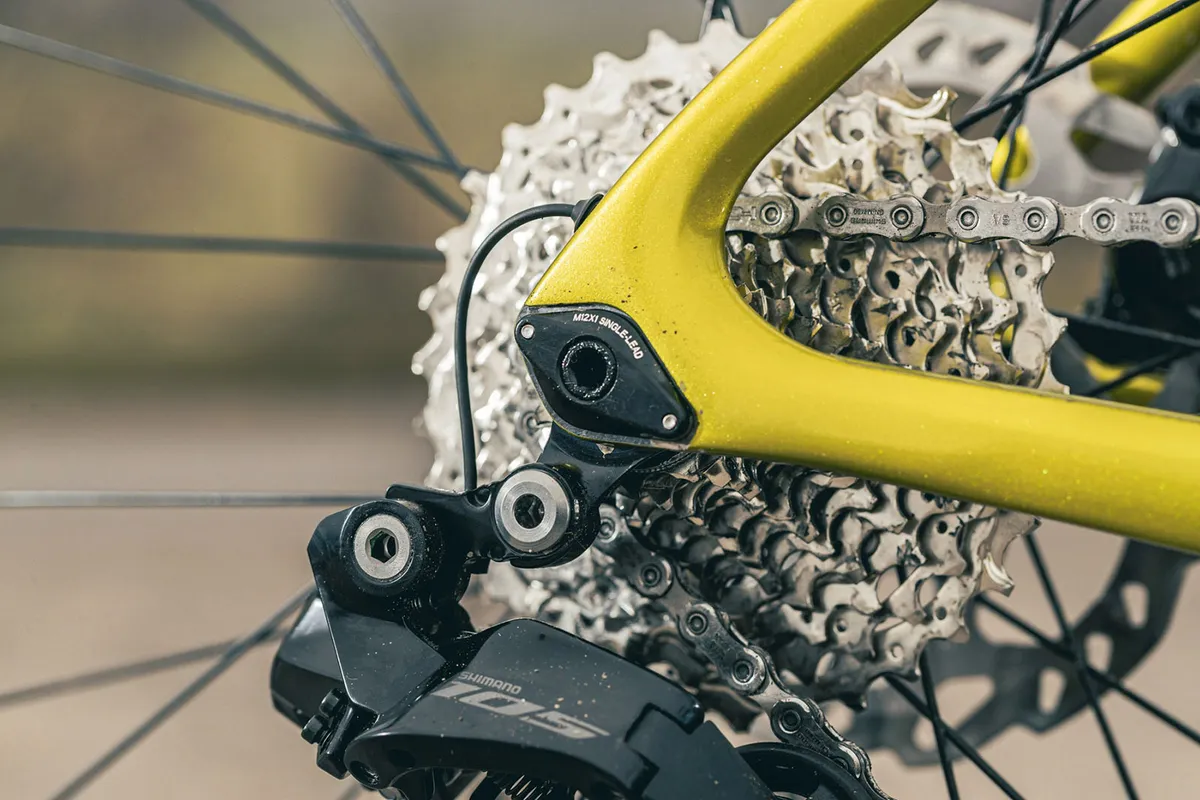
The 50-11 combination and close ratio progression down to the 11t cog will be enough to satisfy faster riders, while there's a sufficiently easy gear to conquer the steepest slopes.
The Cannondale One concealed stem integrates neatly with the frame to fully hide the brake hoses, and Vision’s Trimax Aero alloy handlebar keeps the brake hoses internal from brake lever to stem.
The Vision Trimax bar has a great shape, with the aero-profiled top section and compact drop. It’s comfortable both in the drops and on the hoods. I also found the flattened tops comfortable when sitting up and spinning.
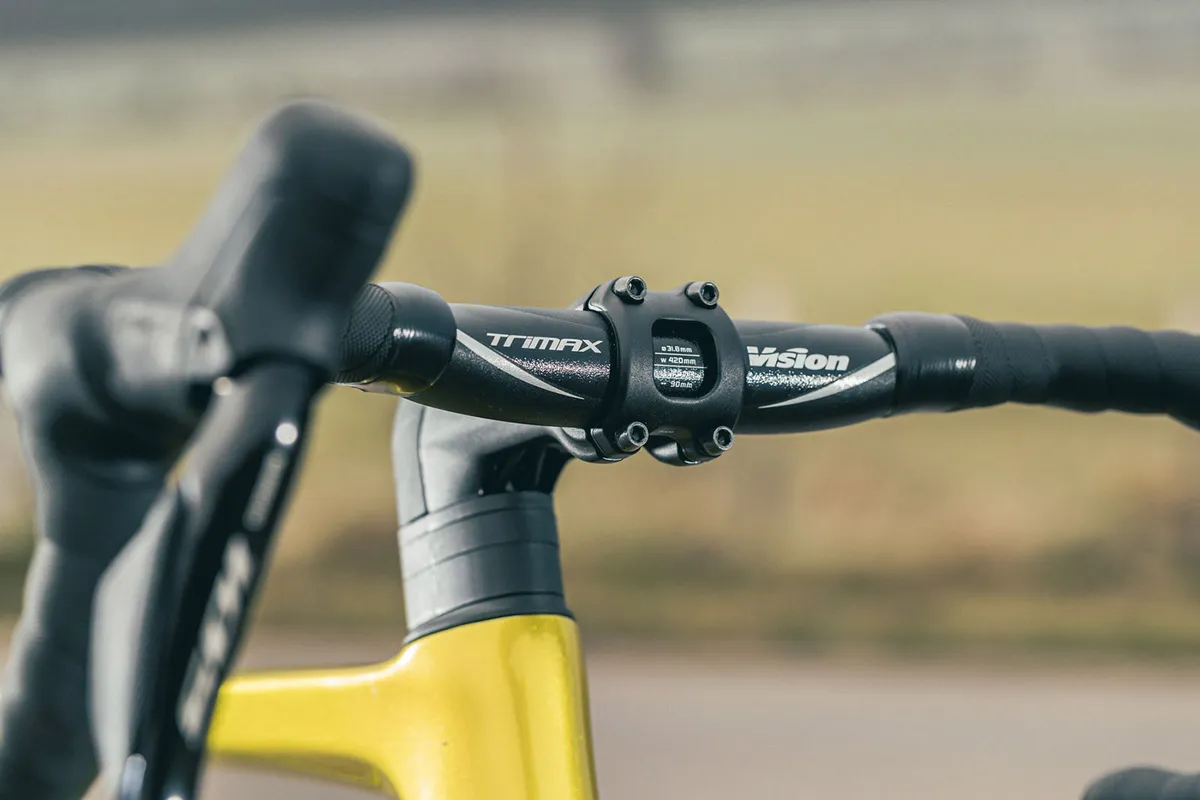
My only personal criticism is the stock choice of a 40cm (centre-to-centre) bar, which can’t be switched out at point of purchase.
My preference would be for a 42 or 44cm bar, although I have broader shoulders than most and like a wider stance.
The carbon-bladed seatpost is topped with a Prologo Nago RS saddle.
The narrow yet deep post is more compliant than I’d expect, and the Nago RS is a shape that suits me and the aggressive riding style the SuperSix Evo generally encourages.
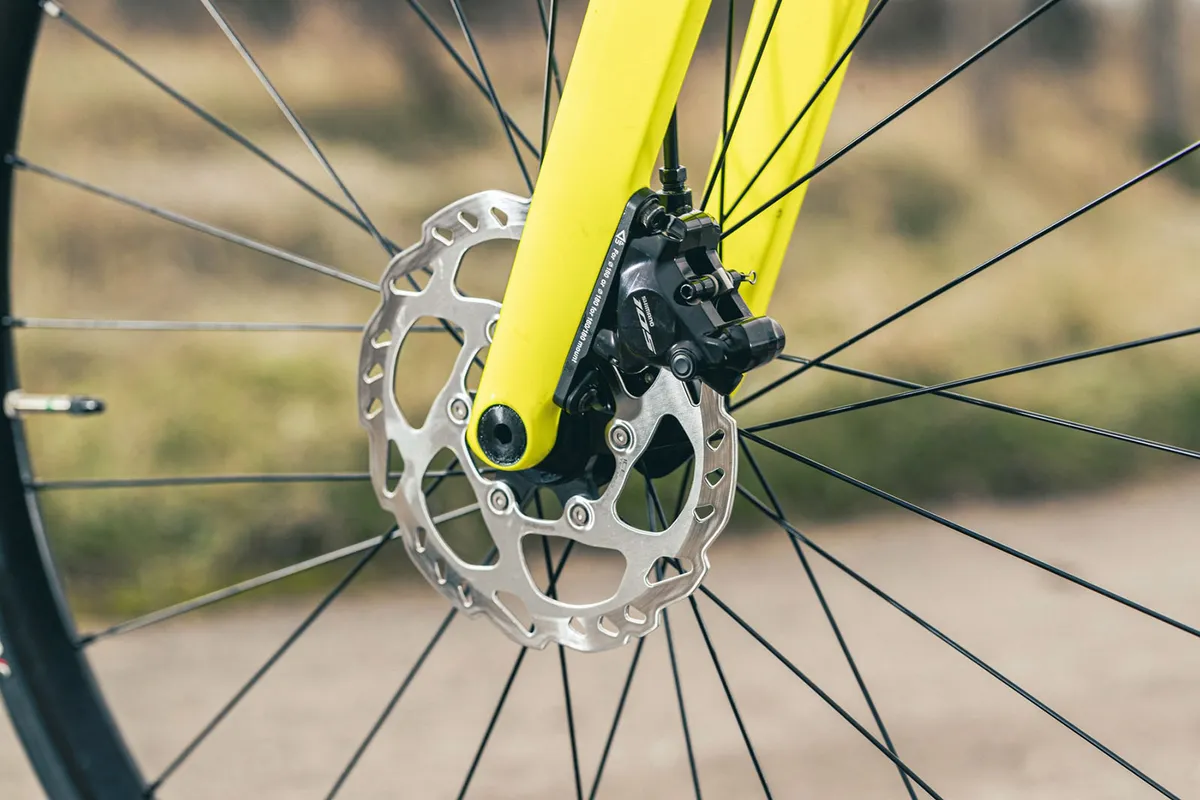
The bike rolls on DT Swiss R470 DB rims, built up with Formula cartridge-bearing hubs.
The R470 DB rim has a 20mm internal width (24mm external) and a shallow 23mm depth.
It’s a good solid starter wheelset and is tubeless-compatible. It’s shod with Vittoria Rubino Pro clincher tyres in 700x25c size.
Cannondale SuperSix Evo 3 ride impressions
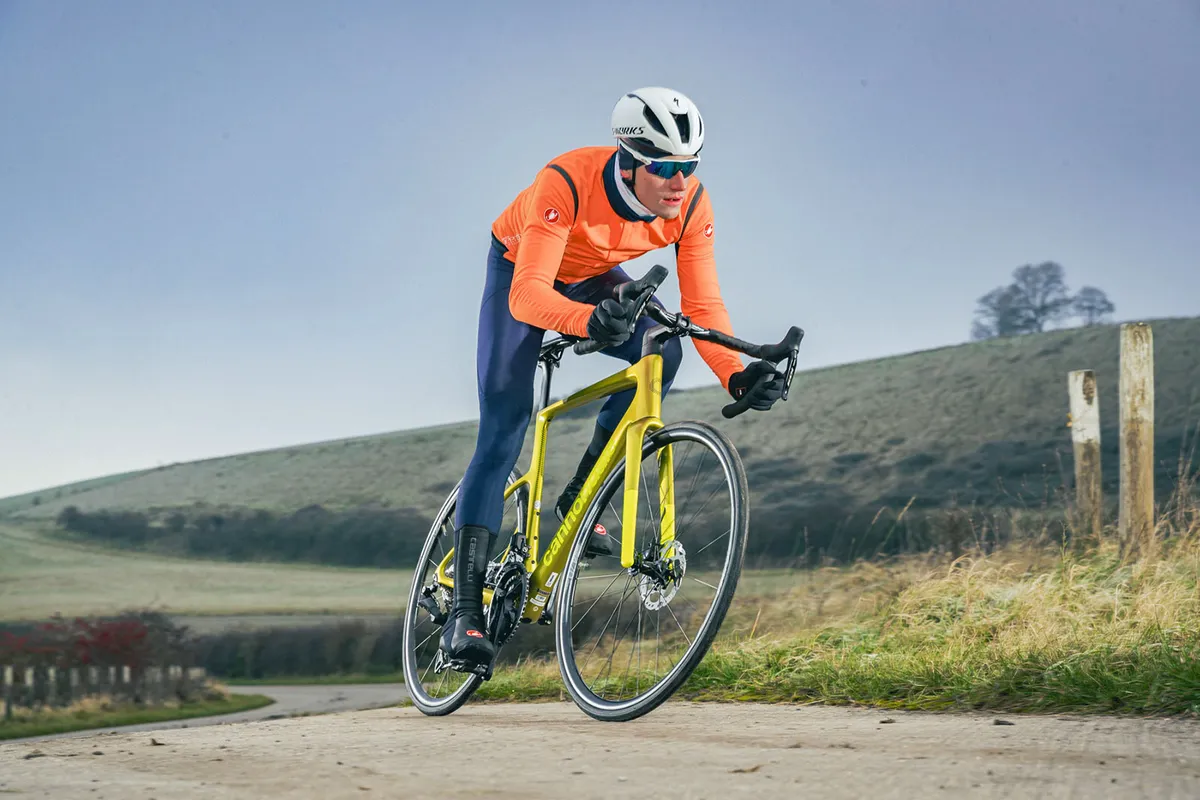
This SuperSix Evo handles with a sublime balance of speed, agility and composure.
On rolling terrain or flat roads, it accelerates with ruthless efficiency. In my view, it even approaches the speed of its aero sibling, the SystemSix.
The frameset’s combination of stiffness when sprinting out of the saddle and compliance over poorer surfaces is brilliant.
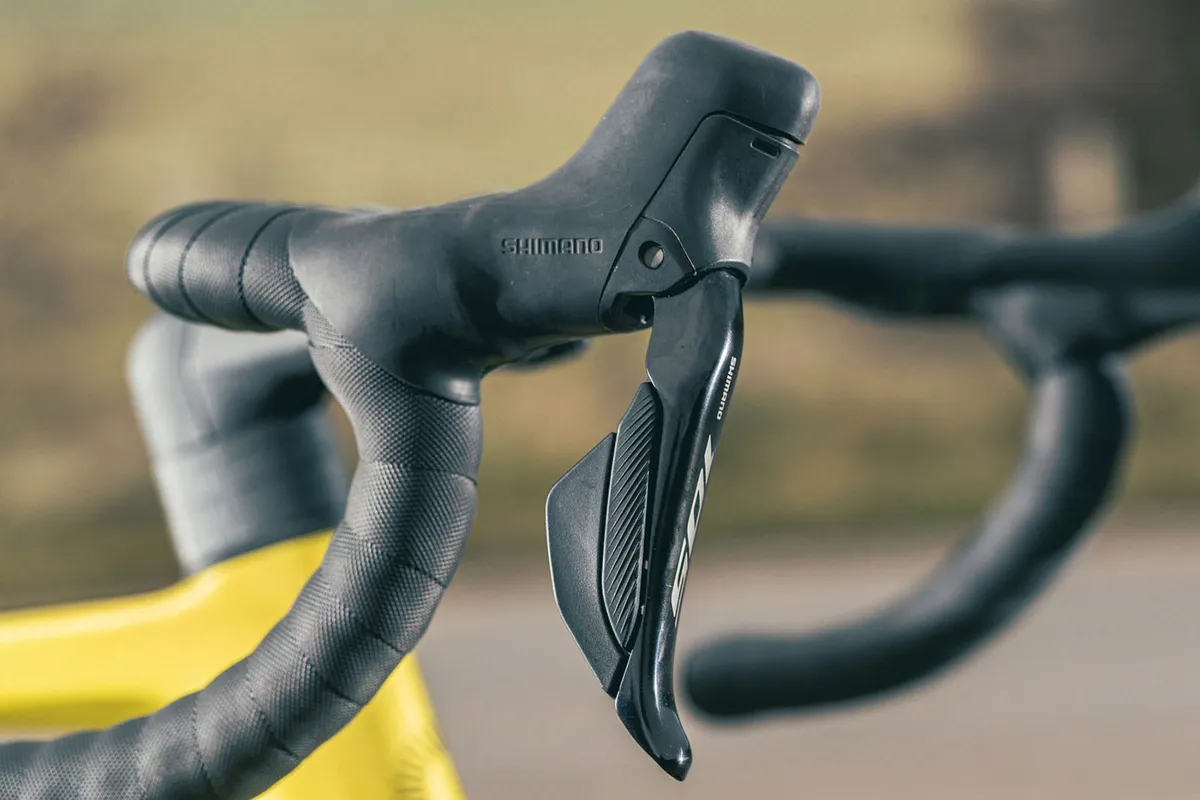
The bike’s 8.42kg total weight is still light by most measures, and even though the wheels perform modestly compared to the frame and fork, it climbs superbly.
Long-term, I’d be sure to upgrade the wheels to something lighter and more aerodynamic to exploit the frameset’s potential. The R470 DB wheelset would then make a good set of training wheels for the winter months.
Point the SuperSix Evo downhill, and the frameset’s prowess and 105’s superb braking combine to make a bike that excels at high speeds.
The Rubino Pro tyres certainly don’t feel the fastest around, but they grip well in damp conditions and over many hours of winter debris-strewn roads they haven’t punctured or cut.
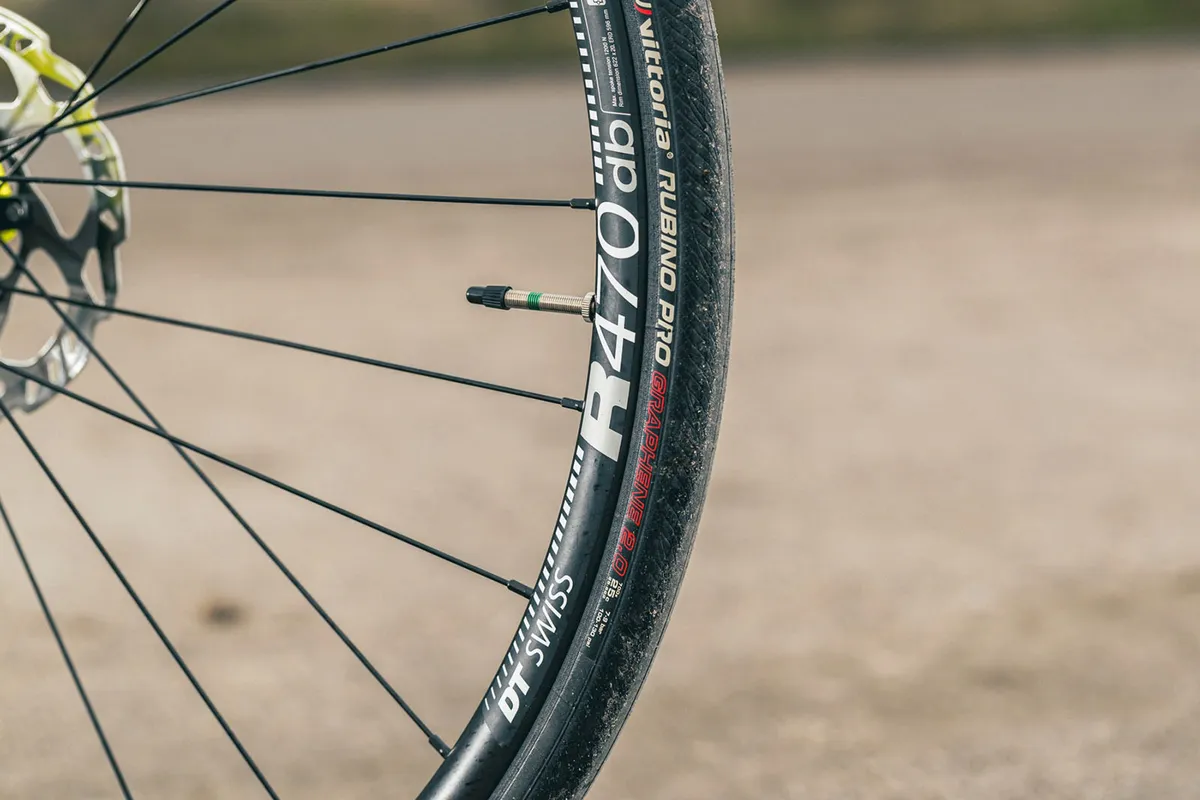
The 25mm width of the tyres is narrow – I know from my experience (of my own SuperSix Evo) that switching up to a 28mm or larger tyre would yield great benefits in comfort, compliance and grip.
At the same time, I’d also consider a faster tubeless tyre model to go with the wheelset upgrade.
That said, I make this point in the context of a £4,000 bike, as opposed to the far more expensive options available.
Cannondale SuperSix Evo 3 bottom line

The SuperSix Evo 3 is everything the best road race bikes should be. It's lively, light and smoothly comfortable with it.
Some may hanker after the lighter Hi-Mod version (or, indeed, lust for a rarified Lab71 frameset), but I would shop a little smarter and opt for this ‘standard’ version of the frameset.
It gets all the design elements of the higher-spec SuperSix Evos, with only a 160g weight penalty compared to the Hi-Mod version.
In reality, it's still a fabulously fast and light bike that can be had for £2,750 less than the entry into the Hi-Mod tier – leaving more than ample budget for upgrades further down the line.
Product
| Brand | Cannondale |
| Price | A$6999.00, €4499.00, £4000.00, $4500.00 |
| Weight | 8.42kg |
Features
| Fork | SuperSix EVO Carbon |
| Stem | Cannondale C1 Conceal, Alloy, 31.8mm |
| Chain | Shimano 105, 12-speed |
| Frame | SuperSix EVO Carbon |
| Tyres | Vittoria Rubino Pro Bright Black, 700x25c, reflective strip |
| Brakes | Shimano 105 R7170 hydraulic disc, 160/160mm RT70 rotors |
| Cranks | Shimano 105 R7100, 50/34 |
| Saddle | Prologo Nago RS STN, Stainless Steel Rails |
| Wheels | DT Swiss R470 db |
| Headset | Integrated |
| Shifter | Shimano 105 Di2 R7170, wireless, 2x12 |
| Cassette | Shimano 105 R7100, 11-34, 12-speed |
| Seatpost | Cannondale C1 Aero 40 Carbon, 20mm offset (51-61cm) |
| Grips/tape | Cannondale Bar Tape, 3.5mm |
| Handlebar | Vision Trimax Aero |
| Bottom bracket | Shimano BB-RS500, BSA |
| Available sizes | 44, 48, 51, 54, 56, 58, 61cm |
| Rear derailleur | Shimano 105 Di2 R7150 |
| Front derailleur | Shimano 105 Di2 R7170 |
| Features | Accessories: Cannondale Wheel Sensor, Shimano EC300 charging connector |
SQUIRREL_13083836
